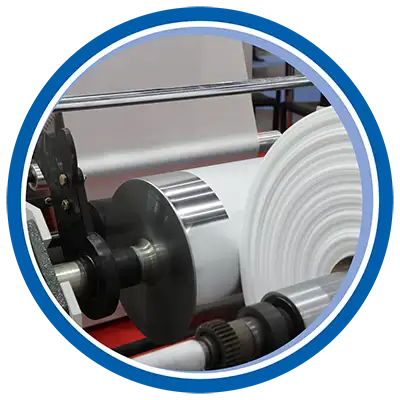Updated for 2025
and EU legislation
and EU legislation


Flexible packaging is an important part of our modern world. Generally made of plastic, it can also include other materials such as paper or aluminium foil and helps ensure products reach consumers safe and fresh, preserving nutrients, taste, and quality.
In the case of medical products and pharmaceuticals, flexible packaging keeps them sterile and protected while also making it possible to make them tamper and counterfeit proof.
Being very light and thin, it reduces the impact of transportation, reduces waste of the goods it protects and often uses far less material than alternative packaging. But its low weight and volume, which make it so useful and resource-efficient, also present a challenge once the packaging becomes waste.
The flexible packaging value chain recognises these issues and is working together to ensure packaging is recycled, flows back into the economy and displaces virgin materials.
‘Designing for a Circular Economy’ guidelines give a clear and practical pathway to ensure packaging can be collected, sorted, and recycled. Essential to meeting EU and other legislative requirements such as the Packaging and Packaging Waste Regulation (PPWR), to achieving industry sustainability goals, and preventing waste and pollution.
Designing flexible packaging suitable for collection, sorting and recycling after use is critical – and a number of factors are increasing the sense of urgency:

Regulatory pressure for recyclability

Meet industry’s own sustainability commitments

Address wider environmental concerns

Mandated recycled content
The Designing for a Circular Economy Guidelines are the result of a unique collaboration, drawing on the technical, environmental and business expertise of hundreds of CEFLEX stakeholders.
The Designing for a Circular Economy Guidelines aim to make flexible packaging circular – and support those working to achieve it:
Clear, practical and educational guidelines for brand owners, retailers, film producers, convertors and the entire value chain
Flexible packaging designed for collection, sorting and recycling – helping boost recycling rates, improve yields and increase value
Higher quality recycled materials to be kept in the economy and used again in a wide range of sustainable end markets

Confident compliance – information and technical advice to stay ahead of the regulatory curve and standards, supported by a commitment to continued testing and insights
The latest iteration – ‘Phase 2’, made public in September 2025 – helps ensure you are ready for 2030 and aligned with legislation.
This update is underpinned by 150 subject matter experts and CEFLEX stakeholders, 5 leading laboratories across Europe and 3 universities. Data and proof points are taken from an extensive two-year testing programme of over 600 packaging samples.
These guidelines aim to be educational and practical and are shared openly to help everyone achieve progress together – particularly in the transition and application of EU legislative targets.
Find out how you can meet your sustainability & circular economy requirements
Get the Guidelines